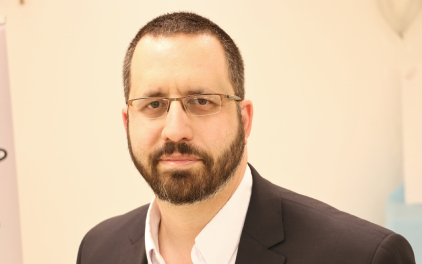Shai Spetgang: “Free education creates a level playing field.”

Shai Spetgang has years of experience as an Environment, Health and Safety (EHS) manager working for a variety of large infrastructure projects. Shai has overseen projects in the fields of telecommunications, oil and gas, power plant construction and association management. His areas of expertise include safety in telecommunications, EHS, electronics industry regulation, document management and quality assurance and control. Shai tells us about managing risks, the relationships he’s forged through Alison and the difference between information and knowledge.
I was looking for a one-stop-shop online, either free or low cost, where I could go from zero to degree in a particular field, like electrical engineering or electronics. And I didn’t find anything like that but I found Alison. The courses are well written and they go through a quality control process which is very important. I found some interesting courses, in health and safety for example, and I started taking them, and have enjoyed many courses. I was registered with Alison for a few years and then I got an email that Mike [Feerick, Alison’s CEO] was coming to Israel and did anyone want to meet with him. So I didn’t just want to meet him I wanted to give him something. I responded and offered to give him a tour of the old city of Jerusalem. We also met the head of safety for Israel and we talked about the free courses that can be written in Hebrew.


I took some education courses as part of my Environmental Studies Degree and I was able to quickly get acquainted with the course writing methodology. I have only published one course so far: a course on Identifying Hazards and Risks which I did to help people get into the mindset of safety wherever they are. I wrote my course with minimal background needed so that anyone can take them and learn. I created this course because I found there was a great need for a course teaching how to write a risk assessment. I did a survey of what safety courses there were on Alison and I saw that this was missing. That’s part of safety, trying to figure out what’s not there, which is the hardest thing to do. You have to have in mind a list of things that should be there. When you use a disc cutter, you need A, B, C, D. But when you see someone in the field and they have A, B, C, you have to know what D is what they’re missing. So I used the same strategy in creating my course.
Every day we manage our own risks. We get out of bed, we stand up. It’s actually advisable not to stand up right away, to wait ten seconds or so, to let our blood pressure equalise. Because if we just stand up out of bed, go from horizontal to vertical, we can blackout sometimes. That right there is risk management – leaving those ten seconds. We manage our risks all the time but what we don’t do is think about them, break it down and say, how could I have managed it better? A lot of our risk management is knee jerk reactions and reflex actions. And I argue in the course that in our daily lives we’ve got that down. But in our work life, we don’t have that because it’s not something we’ve grown up with. When you use a disk cutter, there’s like 20 things you need to do correctly so that if the disc explodes you don’t get it in your eye. There are all these rules and I’ve learned them over the years because I’m a registered safety manager. And so I wanted to share that.


Free education creates a level playing field. Education is supposed to be free. The reason it costs money is to pay for everything around, like the teacher’s salary and the infrastructure. The internet has created a situation where the pendulum is swinging back to free, or low cost, education. Anyone connected to the internet can now access lots of information. Now that’s information. There’s a hierarchy of information, knowledge, wisdom. You can’t put it together unless someone presents it to you in a proper, harmonised way.
On the last page of my course I encourage people to connect with me on LinkedIn and I’m very happy that they do. I find it’s mostly people from third world countries. They ask me for advise and what other courses they can take in particular fields. It’s very fulfilling. It’s exactly what I wanted to happen.
I would advise learners to take as many courses as they can but also to pace themselves. It’s great to sign up to 30 courses but it’s not great to not finish them. Set goals like one course a week, one course every 2-3 days, depending on how much time you have. Another thing I suggest to people taking the courses is to take the assessment at the end first and see how you do. And then go take the course and then take the assessment again.
Make yourself invaluable in the workplace and start learning with Shai today.
Related Posts
-
 Sep 28, 20235S and Beyond 6S: Enhanced Workplace Safety and Efficiency
Sep 28, 20235S and Beyond 6S: Enhanced Workplace Safety and Efficiency -
 Aug 11, 2023Alison Publisher Spotlight: Jawad Chand
Aug 11, 2023Alison Publisher Spotlight: Jawad Chand -
 Jul 4, 2023Alison Publisher Spotlight: Ethan Winer
Jul 4, 2023Alison Publisher Spotlight: Ethan Winer
